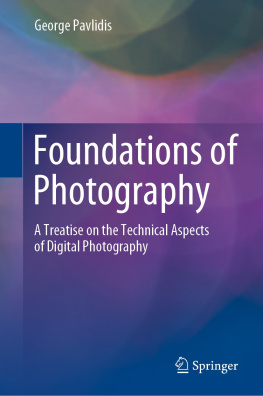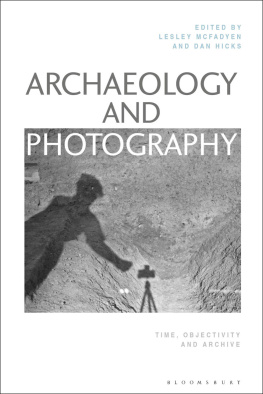
PHOTOGRAPHY AND ITS SHADOW
HAGI KENAAN
STANFORD UNIVERSITY PRESS
STANFORD, CALIFORNIA
STANFORD UNIVERSITY PRESS
Stanford, California
2020 by the Board of Trustees of the Leland Stanford Junior University.
All rights reserved.
: William Eggleston, Glass in Airplane, c. 19711974. Dye transfer print. 30 20 1/2 inches. 76.2 52.1 cm. William Eggleston. Courtesy of David Zwirner Gallery.
No part of this book may be reproduced or transmitted in any form or by any means, electronic or mechanical, including photocopying and recording, or in any information storage or retrieval system without the prior written permission of Stanford University Press.
Printed in the United States of America on acid-free, archival-quality paper
Library of Congress Cataloging-in-Publication Data
Names: Kenaan, Hagi, author.
Title: Photography and its shadow / Hagi Kenaan.
Description: Stanford, California : Stanford University Press, 2020. | Includes bibliographical references and index.
Identifiers: LCCN 2019040806 (print) | LCCN 2019040807 (ebook) | ISBN 9781503606364 (cloth) | ISBN 9781503611375 (paperback) | ISBN 9781503611382 (ebook)
Subjects: LCSH: PhotographyPsychological aspects.
Classification: LCC TR183 .K65 2020 (print) | LCC TR183 (ebook) | DDC 770dc23
LC record available at https://lccn.loc.gov/2019040806
LC ebook record available at https://lccn.loc.gov/2019040807
Cover photograph: Lee Friedlander, New York City, 1966. Lee Friedlander, courtesy of Fraenkel Gallery, San Francisco.
Designed by Kevin Barrett Kane
Typeset at Stanford University Press in 10.5/15 Arno Pro with display in Mono45 Headline
Only now do I perceive how rude to you I am, my dear shadow.
FRIEDRICH NIETZSCHE
CONTENTS
ACKNOWLEDGMENTS
Thanking is integral to a certain kind of thinking, one that remembers that were not the ultimate source of our thoughts and that other people always play a significant role in the writing we call our own. I thank the graduate students and photographers who participated in my seminars on the philosophy of photography at Tel Aviv University. I thank friends and colleagues who read and commented on the manuscript in its different stages and others who made time to discuss the project with me. I thank Meirav Almog, Martin Berger, Georg Bertram, Sarah Betzer, Mattia Biffis, Eran Dorfman, Assaf Evron, Vered Lev Kenaan, Mor Kadishzon, David Kim, Lilach Lachman, Omer Michaelis, Keith Moxey, Alexander Nemerov, Joel Pearl, Giancarla Periti, Itay Shabtay, Graham Shapiro, Joel Snyder. I also thank the generous support of The Center for Advanced Study in the Visual Arts at the National Gallery of Art, Washington DC, in which, while on fellowship during 20162017, the books main ideas crystalized. I thank CASVAs dean and associate dean, Elizabeth Cropper and Peter Lukehart for their wonderful hospitality. At Stanford University Press, I thank Emily-Jane Cohen for her special way of welcoming the book and the production team for its thoughtful work.
INTRODUCTION
I
In the heated debates over the significance and value of photography that swirled around the medium in the first few decades after its invention, it was already clear to both enthusiasts and detractors that the new image-making process was poised to radically alter human experience. Today, a hundred and eighty years after its inception, photography has established itself as the regulating standard for seeing and picturing, remembering and imagining, and, significantly, for mediating relations between ourselves and others. It is now so intimately intertwined within our ordinary routines that we cannot begin to imagine our everyday lives without it. Photography has become an intrinsic condition of the human, a condition thatwith Heidegger in mindmay be termed an Existential. And yet, photographys rootedness in the ordinary is so deep that its existential dimension also typically hides from us, challenging us to find a vantage point as well as a philosophical language for describing its pervasive presence.
This challenge is further complicated by the fact that photography itself is constantly changing. In recent years photographys dominance as a visual form has been inseparable from the mediums rapid and ceaseless technological transformations. These transformations are often taken to indicate that photographys ontological grounds have shifted, that a new ontology of images has emerged, which, for lack of a better term, has been called post-photography. The literature on post-photography tends to identify the new condition of the image with the latest technological forms it has taken after the digital turn, but these innovations cannot in themselves explain the photographic condition. The question concerning technology, to refer to Heidegger again, is not a technological question but is, rather, one rooted in who we areand who we have becomeas human beings. At the same time, however, the fact that photographic theory doesnt offer a satisfying account of post-photography does not necessarily mean that the term, or the intuition behind it, is empty.
In 1839 William Henry Fox Talbot described the invention of photography as the new art of photogenic drawing. His description of photography came at a time when the medium was still so undeterminedmuch like post-photography todaythat every description of it remained conceptually dependent on the traditional category of visual representation that photography claimed to supersede. It took time for photographers and interpreters of photography to recognize the conceptual autonomy of the photograph and to articulate the nuances of its specificity (as sui generis) vis--vis the traditional visual arts. This process of retroactively determining the identity of the photographic image constitutes a consequential chapter in the history of photography, which has received a variety of interesting treatments; but, its philosophical significance lies in how it illustrates a general dialectic that is essential to the life of the image: a dialectic between the possibilities opened up by new depiction technologies and the determination of these possibilities in and through a new pictorial medium with distinctive modalities of meaning.
Understanding the emergence of photography in these terms is fundamental to the project that I propose here, one that lays the groundwork for a philosophical interpretation of the changing condition of photography in the twenty-first century. In this respect, this book should be understood as a prolegomenonnot the kind of The hegemony of the photographic is a short, and likely, a passing chapter in our relationship with images. Yet, as it is caught between today and tomorrow, photography also provides an opportune framework for rethinking the condition of the visual image in its movement toward the future, a future for which we are responsible, since its trajectory is determined by our present age.
II
To explain the retroactive dynamics at play in determining the identity of the photographic, we need to recognize the presence of a certain dualityone that was not only operative in the emergence of photography but that reveals itself in the twofold character of photographys present condition. Photography has become a pervasive dimension of the human. It is rooted in ordinary experience, but despite its efficacy and immense impact, it is itself a changing historical condition that might already be passing.
To say that photography is both omnipresent and dead requires further elaboration. And, to explain this tension, I turn to Nietzsche, a philosopher who was born the very same year1844that Talbot published
Next page










